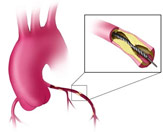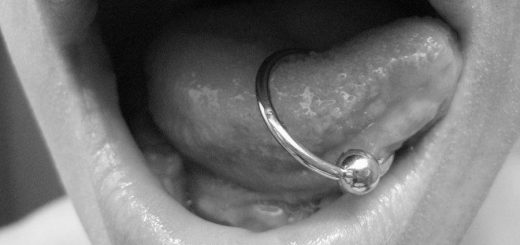How Much Does Heart Stent Cost
As a basic reference, a stent is a small mesh tube that is used or inserted by the doctors to improve the patient’s circulation of blood. The insertion of a stent in the weak artery is usually one of the procedures done in a PCI or percutaneous coronary intervention (also known as angioplasty), which is a minimally invasive medical operation to treat blocked or narrow heart arteries.
Now that we know the basic information about the stent and the related procedures that utilize the medical instrument, how much does a heart stent cost?
Average Costs of Heart Stent According to Type
According to the article of Buzzle, the costs apparently depend on the type of stent being used. There are three types and these are the following:
- Bare-metal stent is the simplest heart stent type. This stent is either made up of 316L grade stainless steel or a combined metal of cobalt and chromium. Its thin wire is not coated with drugs unlike the second type of stent. The average bare-metal heart stent price does not go beyond $1,000.
- Drug-eluting or DES are stents that are coated or covered with medical drugs to stop the development of reoccurrence of stenosis, which blocks the passageways of the arteries. This is typically used on patients who have higher chances of getting thrombosis or the circumstance of blood clotting after the stent has been inserted. The average cost for this type is less than $1,700.
- Dual therapy stent is a combination of drug-eluting and bio-engineered stents. The surface of this type of stent is coated with antibodies that cause endothelial progenitor cells or EPCs stick, forming a protective layer to decrease the occurrences of thrombosis. This is the most expensive type, having the average angioplasty stent cost around $4,000.
Estimate Prices of Heart Stent According to Country
The heart stent cost also differs from country to country. Apparently, the angioplasty stent cost is much higher in developing countries than in developed countries where fair pricing or price controlling is implemented on the costs of medical instruments.
*In Germany, the heart stent price is €350 or approximately $460.
*In other European countries, the average cost is around €600 or approximately $790.
*Meanwhile, the price in India 60,000 Rupees or around $1,000.
Cost of Angioplasty Procedure
When it comes to the non-surgical angioplasty procedure, the total cost without insurance can range from $11,000 to $41,000, depending on the stent type and the number of times it the device has been used as well as the duration of stay in a hospital.
In cases when the patient has insurance, the total expenses of the same angioplasty procedure may decrease around $11,000 to $36,000 since the medical operation is necessary to treat the person’s coronary arteries and heart conditions, according to the article of Cost Helper Health.
Purpose and Benefits of Heart Stent
Basically, the primary objective of stent insertion in the artery or blood vessel is to lessen angina or chest pain and lengthen the patient’s chances of surviving.
In 1994, the American FDA or Food and Drug Administration had given its approval to conduct the voluntary implantation of heart stents. After the approval, the sales of the medical device significantly rose up to $5 billion. The popularity of the stents was due to their benefits that were not observed after a patient undergoes a bypass operation. Generally, the bypass procedure has a more expensive price than angioplasty stent cost.
Without further ado, here are some of the major benefits of heart stents.
*Insertions or placements of heart stents do not require general anesthesia that would cause the heart stent cost to go higher. Apparently, general anesthesia has a separate price, and sometimes, it can cost a lot.
*The necessity of anesthesia is eliminated because the use of stents does not let the doctors cut any part of the patient’s body.
*Unlike the invasive types of heart-related operations, this non- to minimally invasive implantation of stents reduces the chances of getting complications.
*Most of all, this procedure is much cheaper and safer than a bypass surgical operation. After the implantation of heart stents, doctors may let the patient stay in the hospital for a few days, decreasing the total expenses of the patient’s hospital bill.
Procedures of Heart Stent Placement
For the sake of those who are not familiar with the procedures, here are the steps on how the surgeon performs the heart stent implantation.
- The surgeon cuts a small incision in the patient’s groin so that the surgeon can access a blood vessel or artery.
- Then, the surgeon inserts a catheter or a thin tube through the incision he or she made.
- Once the catheter is inserted, the doctor uses an X-ray as a guide to insert the tube up, going to the coronary or heart artery. The X-ray will show images of the arteries’ condition.
- Through the catheter, the surgeon will insert a small wire. Then, another catheter, which has an attached balloon, will be inserted, following the initial guide of inserting the first catheter.
- When the balloon has reached the artery, the surgeon inflates the balloon.
- Once the surgeon inserts the catheter with the balloon, he or she also places the stent to keep the artery open and let the blood flow. When the stent is securely placed, the surgeon will then remove the catheter.
Risks of Heart Stent Implantation or Placement
Just because this procedure is minimally invasive, it does not mean the patients are not at risk of getting complications. Yes, there are complications, but they are at a minimal level. These risks brought by the implantation are the following:
– allergic reactions due to medications are triggered
– difficulty in breathing
– occurrences of bleeding and blood clotting
– blockage of the stented coronary artery
– narrowing of the artery again
– possibilities of heart attack
– presence of infection
On rare occasions, patients are at risk of getting seizures and stroke.
These risks are not deadly, except for the heart attack. However, these complications should not be taken for granted due to the fact that it involves the heart. If for instance, the patient does not take care of himself or herself after the placement has been performed, then expect another spending of heart stent price.












